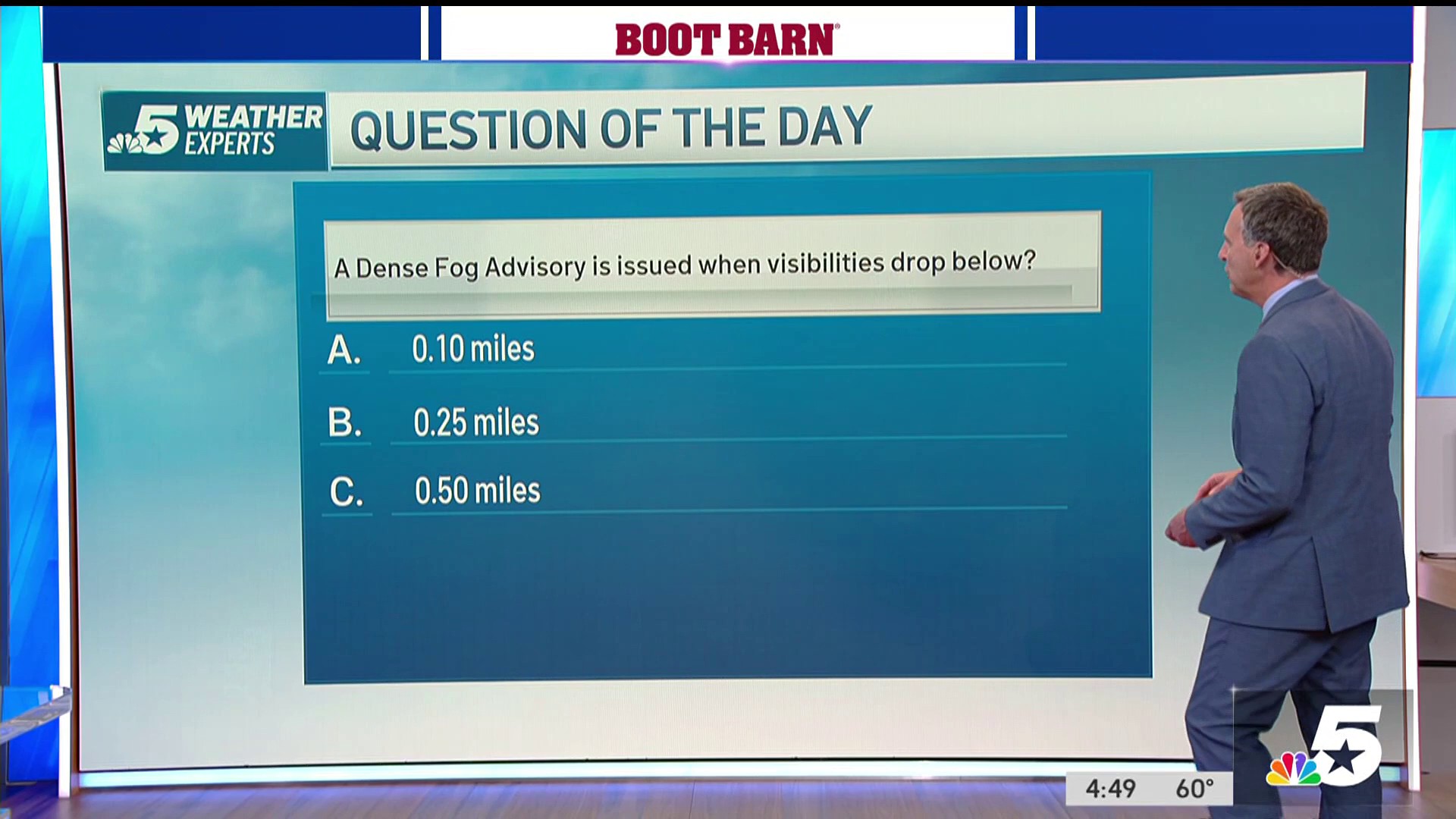
WHAT IS FOG?
Many people recognize fog as a low-lying cloud, but how does it form? Fog develops when the air near the ground becomes saturated or cool enough for moisture to condense. This occurs when the temperature and dew point are equal, resulting in 100% relative humidity.
Fog is particularly common during the fall and early winter, but did you know there are different types? Here are the three most common types of fog you might encounter this fall.

Get top local stories in DFW delivered to you every morning. Sign up for NBC DFW's News Headlines newsletter.
TYPES OF FOG
- ADVECTION FOG: This fog forms when a warm, moist air mass moves over a cooler surface. It often occurs, for example, over the Golden Gate Bridge when warm air from the land moves over the cold ocean water.
- RADIATION FOG: This fog forms when the air near the ground cools overnight as heat from the surface escapes into the atmosphere. As the air temperature drops and reaches the dew point, moisture in the air condenses to form fog. This type of fog is common in our region during this time of year.
- UPSLOPE FOG: This fog forms when moist air is forced to rise up a mountain slope. As the air rises, it cools and reaches the dew point, causing condensation and fog formation. This is more common in mountainous areas.
Regardless of the type of fog this season, take extra precautions when driving in these areas of reduced visibility.




